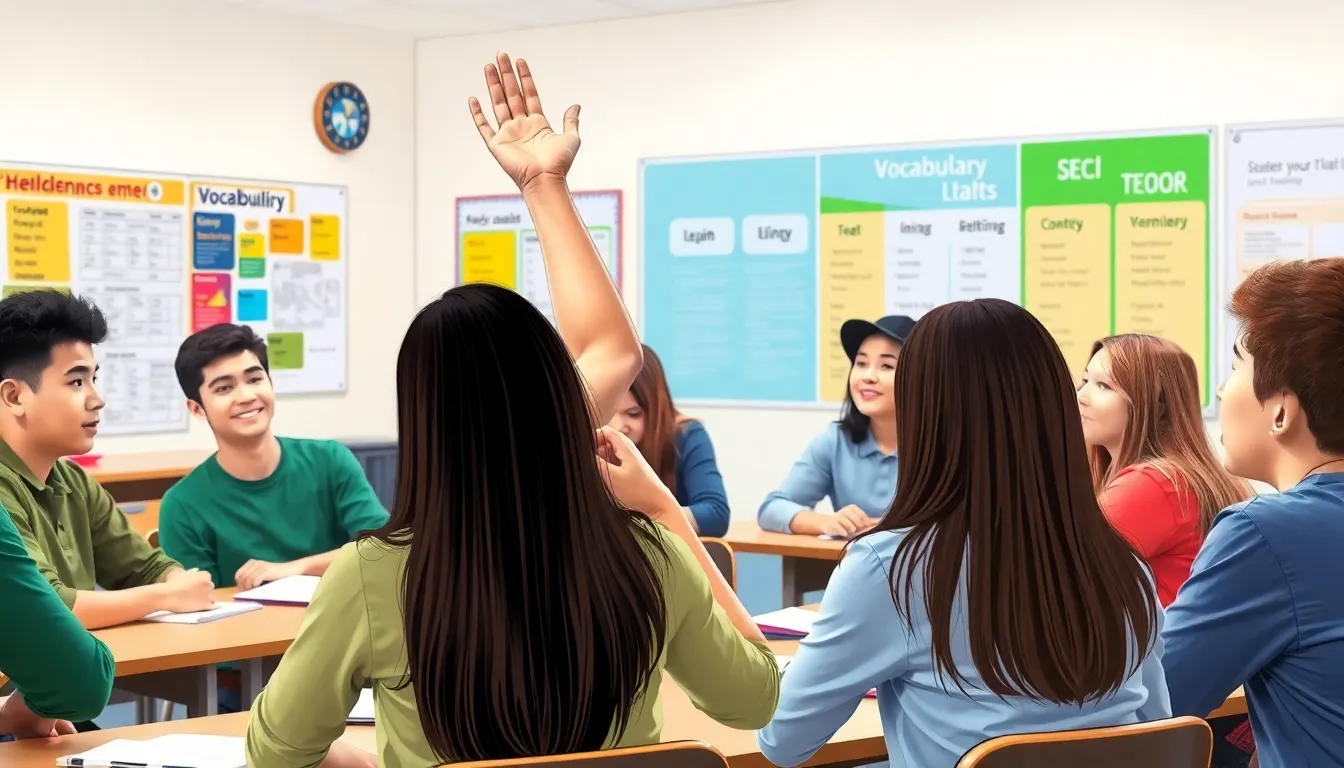Table of Contents
ToggleIn a world where emojis often speak louder than words, mastering a new language might feel like trying to find Waldo in a sea of stripes. Yet, the journey to fluency can be both rewarding and entertaining when guided by the right teaching methods. From the classic grammar-translation approach to the immersive techniques that make learners feel like they’re living in a foreign film, the options are as varied as the languages themselves.
Overview of Language Teaching Methods
Effective language teaching methods play a crucial role in promoting language acquisition. Traditional grammar-translation methods focus on reading and writing. These methods prioritize vocabulary and grammar rules over conversational skills.
Communicative language teaching emphasizes interaction and real-life communication. This approach encourages learners to engage in meaningful conversations. In this method, fluency takes precedence over accuracy.
Task-based language teaching emphasizes completing tasks using the target language. Learners gain practical experience and contextual understanding through this method. They often work in pairs or groups to enhance collaboration.
Immersion is another method that creates a fully language-focused environment. Students are surrounded by the target language, fostering natural learning. This approach accelerates language acquisition as learners adapt to real-life situations.
Content-based instruction integrates language learning with subject content. This method helps students relate language to topics of interest or expertise. As a result, learners find motivation and relevance in their studies.
Finally, technology-enhanced language teaching incorporates digital tools and resources. Online platforms and apps facilitate self-paced learning. These tools offer opportunities for practice outside traditional classroom settings.
A variety of language teaching methods exists, each with its strengths and focusses. The choice of method often depends on learners’ goals and preferences. Effective teachers adapt their strategies to meet the specific needs of their students.
Traditional Language Teaching Methods

Traditional language teaching methods play a significant role in shaping language acquisition practices. They emphasize structured learning and provide a foundation for linguistic comprehension.
Grammar-Translation Method
The Grammar-Translation Method focuses on reading and writing skills through direct translation of texts. Vocabulary and grammar rules receive priority, which means students often engage with literature rather than spoken language. This method encourages a thorough understanding of grammatical structures, aiding learners in building a strong linguistic framework. Many teachers use this strategy in classroom settings to develop learners’ analytical skills. Typically, drills and exercises reinforce memorization of vocabulary and grammar rules.
Direct Method
The Direct Method emphasizes immersion in the target language and prioritizes oral skills over written ones. Teachers present vocabulary and grammar concepts through audio-visual means, allowing students to learn contextually. Frequent interaction takes place in the target language, supporting spontaneous use and comprehension. Learners practice speaking through questions and answers, promoting natural language development. This method encourages students to think in the target language, fostering greater fluency and confidence in communication. Overall, its focus on conversational skills helps bridge the gap between theoretical knowledge and practical application.
Modern Language Teaching Methods
Different teaching methods cater to diverse learner needs and objectives, enhancing language acquisition effectively. Two prominent strategies include Communicative Language Teaching and Task-Based Language Teaching.
Communicative Language Teaching
Communicative Language Teaching focuses on interaction as the primary means of language acquisition. Learners engage in real-life communication, which emphasizes fluency over grammatical accuracy. Activities include role-plays, discussions, and problem-solving tasks that mirror authentic situations. Teachers encourage students to express themselves freely, creating a supportive environment where mistakes serve as learning opportunities. This method enhances confidence and equips learners with practical language skills for everyday use.
Task-Based Language Teaching
Task-Based Language Teaching revolves around the completion of meaningful tasks using the target language. Students engage in activities that reflect real-world challenges, fostering collaboration and practical experience. Tasks range from planning a trip to conducting interviews, requiring learners to utilize their language skills actively. Teachers guide students through various stages, including planning, execution, and reflection, enhancing overall language competence. This approach promotes critical thinking and teamwork, preparing students for real-life applications of their language abilities.
Innovative Approaches to Language Teaching
Innovative language teaching methods enhance engagement and effectiveness in language acquisition. They reflect contemporary educational practices that align with learners’ needs and interests.
Content-Based Instruction
Content-Based Instruction integrates language learning with relevant subject matter. This method boosts student motivation by connecting language skills with academic content, such as science or history. Learners engage more deeply with the material, enhancing their understanding of both language and content. Employing thematic units allows educators to teach vocabulary and grammatical structures in context. This contextual learning results in a more meaningful language experience, as students apply their new skills to real-world topics, promoting both language proficiency and critical thinking.
Blended Learning in Language Education
Blended Learning combines traditional classroom instruction with online resources. This approach allows learners to access digital materials outside class and receive in-person guidance. Flexibility characterizes this method, enabling students to learn at their own pace. Assigning activities that require collaboration fosters both language skills and teamwork. Effective use of technology in blended learning creates personalized learning experiences and supports diverse learning styles. Educators can adapt lessons based on student performance, enhancing overall language acquisition.
Language teaching methods play a crucial role in shaping learners’ experiences and outcomes. By embracing a variety of approaches educators can cater to individual needs and preferences. The dynamic landscape of language learning requires flexibility and creativity in teaching strategies.
Innovative methods like Blended Learning and Task-Based Language Teaching not only enhance engagement but also prepare students for real-world communication. As the world becomes increasingly interconnected the ability to adapt and evolve teaching practices will remain essential. Ultimately the right blend of methods can empower learners to achieve proficiency and confidence in their language skills.





